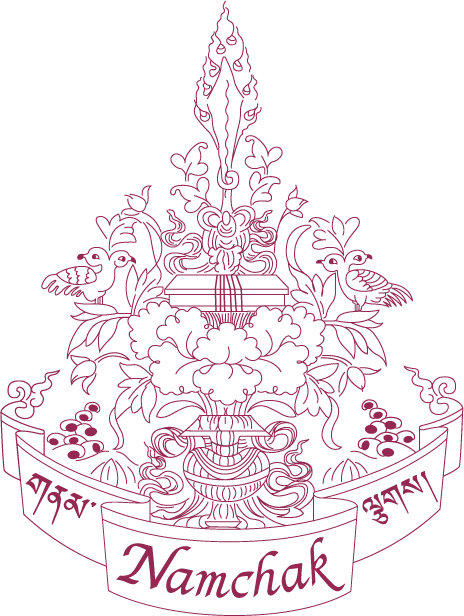June’s Learning Resources
June
Thriving Relationships
There is no going it alone. We live our lives with others, part of interconnected communities, known as “Sangha” in Tibetan Buddhist practice. We explore the ways we can cultivate awareness within ourselves and grow as we engage with those around us, ultimately living happier and more meaningful lives and contributing to the same for others.
LEARNING RESOURCES & ACTIVITIES 
- Discuss: How can I cultivate deeper loving relationships to myself and others? How does connection with myself impact my interactions with others? How can I pay attention and listen more deeply to myself and others? What supports me in staying in contact with my internal experience during a pleasant, unpleasant, or neutral interaction with another? How can I embrace relationships as a way to help identify and graciously receive feedback about my unconscious patterns? What are some actions I can take to help improve my current relationships?
- Read: What Is Sangha? By Thich Nhat Hanh (lionsroar.com)
- Watch: 3 Steps to Turn Everyday Get-Togethers into Transformative Gatherings (ted.com)
- Namchak Blog: Sangha is a Key Part of Any Meditation Practice
- Lama Tsomo’s book recommendation: Deepening Community: Finding Joy Together in Chaotic Times by Paul Born* From Lama Tsomo: “This very readable, down-to-earth book gives vivid examples of satisfying community that give clear guidance for how we can create them for ourselves—in our neighborhoods, areas of work, change-making communities, really anywhere where people are clumped together. Let’s face it, we’re herd animals and are happiest when we do community well. But they never teach us in school. In modern times we got to thinking we didn’t need community for survival, as we had in the past. We’re learning that as times get harder and harder, we very much need each other. But it’s not just for survival; it’s also for thriving, meaning, and happiness.”
- Podcast: The Art of Gathering with Priya Parker (Unlocking Us with Brené Brown, brenebrown.com)
* Namchak Foundation and Lama Tsomo do not receive any monetary or other benefit from the purchase of this book.
MEDITATION INSPIRATION 
Three-minute Meditation for Tuning into Your Heart/Mind Tap into the deep intention for developing true connection with ourselves and the vast ocean. Through our hearts we can feel our shared relation and deep interconnectedness.
One Community Agenda

- Invite a moment of silence with three collective breaths, and give rise to Bodhicitta.
- Read Community Commitments.
- What is one practice you have that contributes to thriving relationships? OR What is a question you have about how to be in thriving relationships?

- Presence: first step to being in relationship is being together. It’s not possible to be fully connected if you’re not present
- There is a kind of magic that opens up when you are present with other people.
- Meditation is a great way to cultivate presence.

- How are you present in your relationships? How are you not present in your relationships? (5 min)
- Report back: What did you notice in this reflection? Did anything surprise you?
- Another word you might use for presence is awareness.
- “A sangha is a community of people practicing the dharma together in order to bring about and to maintain awareness. The essence of a sangha is awareness, understanding, acceptance, harmony and love.” (from What is Sangha by Thich Nhat Hanh, LionsRoar.com]
- Namchak blog post on Sangha
- Relationships aren’t just nice to have – they’re essential in pursuing any kind of path. Collectively, relationships are the foundation of our lives, community and culture and are at the heart of how things change and evolve in the world.
- Presence is at a premium – so many things are demanding our attention.
- Prioritizing presence in relationships can shift things in very significant ways – it’s also contagious.
 Partner Activity – What are you experiencing? (20-25 min)
Partner Activity – What are you experiencing? (20-25 min)
- Often we talk about presence individually, but how do you bring it into your relationships? Into sangha?
- Introduce exercise: What are you experiencing?
- In pairs, you are going to take turns asking each other “Name – what are you experiencing?” You will reply with what you’re experiencing in your body. Ie: I’m experiencing the sensation of my butt in this chair. Not: I’m thinking about my day at work. One partner will repeatedly ask the question – say the whole thing each time – then you will switch.
- We’ll do two rounds of this. Stick with it. It may feel silly or awkward. Do your best to just ask and answer the question. Don’t add commentary, don’t debrief. Just stay in it. Really try to tune into your sensory experience.
- The third round you will switch to “We are experiencing.” Instead of a query, you’ll just go back and forth saying “we are experiencing.” This is a practice in trusting that there is a shared experience in your togetherness. Do your best to stay tuned into your sensory experience vs. trying to think what the other person might be experiencing.

- Report Back: what did you notice?
- Try: “we are experiencing” as a full group.
- Speak from the group but don’t lose yourself – you being present as your full sovereign self is essential to the whole. It’s distinct from the group – not talking about getting lost in the group – it’s the combination of your distinct self + attunement with the togetherness of the group that really opens things up. “We space” framework:

- Self, Other, Opponent – point to Revolutionary Love Project’s Compass (valariekaur.com
- Relationship to place, especially the earth – Braiding Sweetgrass
- Relationship to ourselves: integrity – Martha Beck (marthabeck.com)
- Foundation of all of these: presence, clear sight, honestly seeing the world
- Vipassana practice can be helpful with this.

- Take about 5-10 minutes to sit together in Shamata/Vipassana. You may engage in silent practice or follow this guided 10-minute Shamata meditation with Lama Tsomo.

By the power of this compassionate practice,
may suffering be transformed into peace.
May the hearts of all beings be open,
and their wisdom radiate from within.
Keep Learning
FEBRUARY
Finding Belonging
As our awareness of our interconnectedness expands, so too does our sense of belonging in the world. This month, through exercises focused on our individual and shared stories, we explore how we can open our hearts to experience an expansive sense of love and true connection. We’ll look at the four “immeasurable” qualities of Compassion, Loving-Kindness, Sympathetic Joy, and Equanimity.
March
Tackling Stress
Modern life brings unprecedented stressors, from personal challenges to global ones like climate change. Shamata helps us expand our mental awareness of the causes of stress, allowing us to cultivate a greater sense of calm in our lives and find the joy that is always available.
APRIL
Practicing Inclusion
Treating people of all backgrounds and identities with fairness and respect is an ongoing journey for most of us, including our team at Namchak. We share our experience with the practice of nonviolent communication, which teaches us how to listen deeply to our own needs as well as those of others, helping us connect to our innate compassion.
MAY
Meaningful Work
Our personal practice isn’t just for our own benefit but for others, too. We dive into the meaning of work, consider our gifts, and examine work as an environment to practice being in community and contributing to the greater good.

